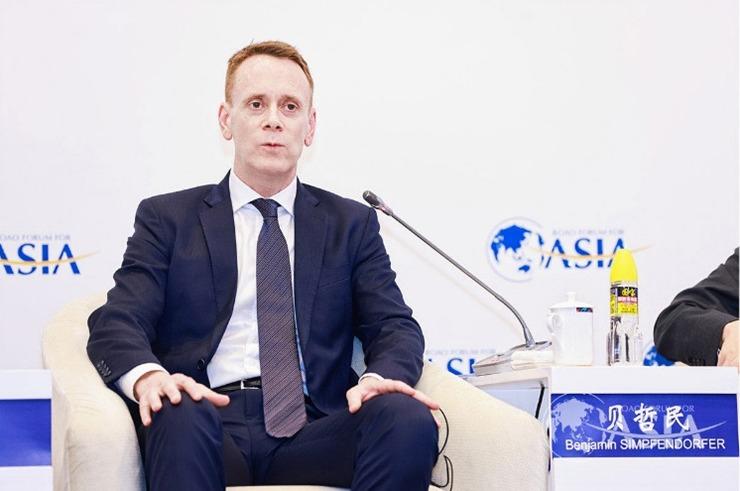 Ben Simpfendorfer, a partner at consultancy Oliver Wyman, shares his views at a panel at the Boao Forum for Asia Annual Conference 2023. (PROVIDED TO CHINA DAILY)
Ben Simpfendorfer, a partner at consultancy Oliver Wyman, shares his views at a panel at the Boao Forum for Asia Annual Conference 2023. (PROVIDED TO CHINA DAILY)
BOAO, Hainan – Despite the global economic slowdown, China will not only remain a major manufacturing hub but it will also create employment and boost income growth in the region, notably in South and Southeast Asia, said Ben Simpfendorfer, a partner at consultancy Oliver Wyman.
Simpfendorfer, in an interview at the Boao Forum for Asia Annual Conference 2023, added that over the long term, China's regional role is seen as "quite a constructive development."
He said that there are three main points to consider about the challenges and opportunities facing the Asia-Pacific this year.
We need to work our way through that and hopefully see a stronger recovery next year.
Ben Simpfendorfer, Partner, Oliver Wyman
First, the risks of a global recession this year are beginning to rise and that potentially impacts export growth from the region, he said. Exports are already contracting in several countries – such as China, South Korea and Singapore – and that is a drag on unemployment, as well as fiscal revenue.
"We need to work our way through that and hopefully see a stronger recovery next year," Simpfendorfer said at the forum in Boao, South China's Hainan province.
Second is the movement of supply chains across the region and regional footprints being reconfigured, he said. Even if there is a slight shift in production out of China into Vietnam and to a less extent India and Indonesia, that is "a positive development in so far it makes the world a more resilient place."
Third, Simpfendorfer said that GDP per capita in South and Southeast Asia has risen to levels very similar to those in China back in 2010. It is around that level that consumers like to start spending on big items such as automobiles or spending on services, he said, and he expects it to result in an upswing in consumer spending.
"That's very positive for the region but also positive for China given that it does export consumer products into the rest of the region," he added.
Simpfendorfer said the supply chain is very important for Asia to deal with challenges, as are commitments to globalization and free trade within the region. He said that this should not only include the movement of capital but the movement of ideas and innovation.
Modernizing manufacturing will increase the ability of local companies to build out regional footprints – through building factories, opening up new digital platforms, e-commerce and digital payments – that will ultimately drive productivity growth across Asia. "It is a very positive trend for long-term growth," he said.
Commenting on China's Global Development Initiative, he said that it mirrored the priorities of many governments around the world and is likely to be embraced.
"As the world's second-largest economy, China's role will obviously be important, and so any additional capacity it can provide, whether that's in terms of aid, in terms of policy support, innovation, all of that should be welcomed," he said.


